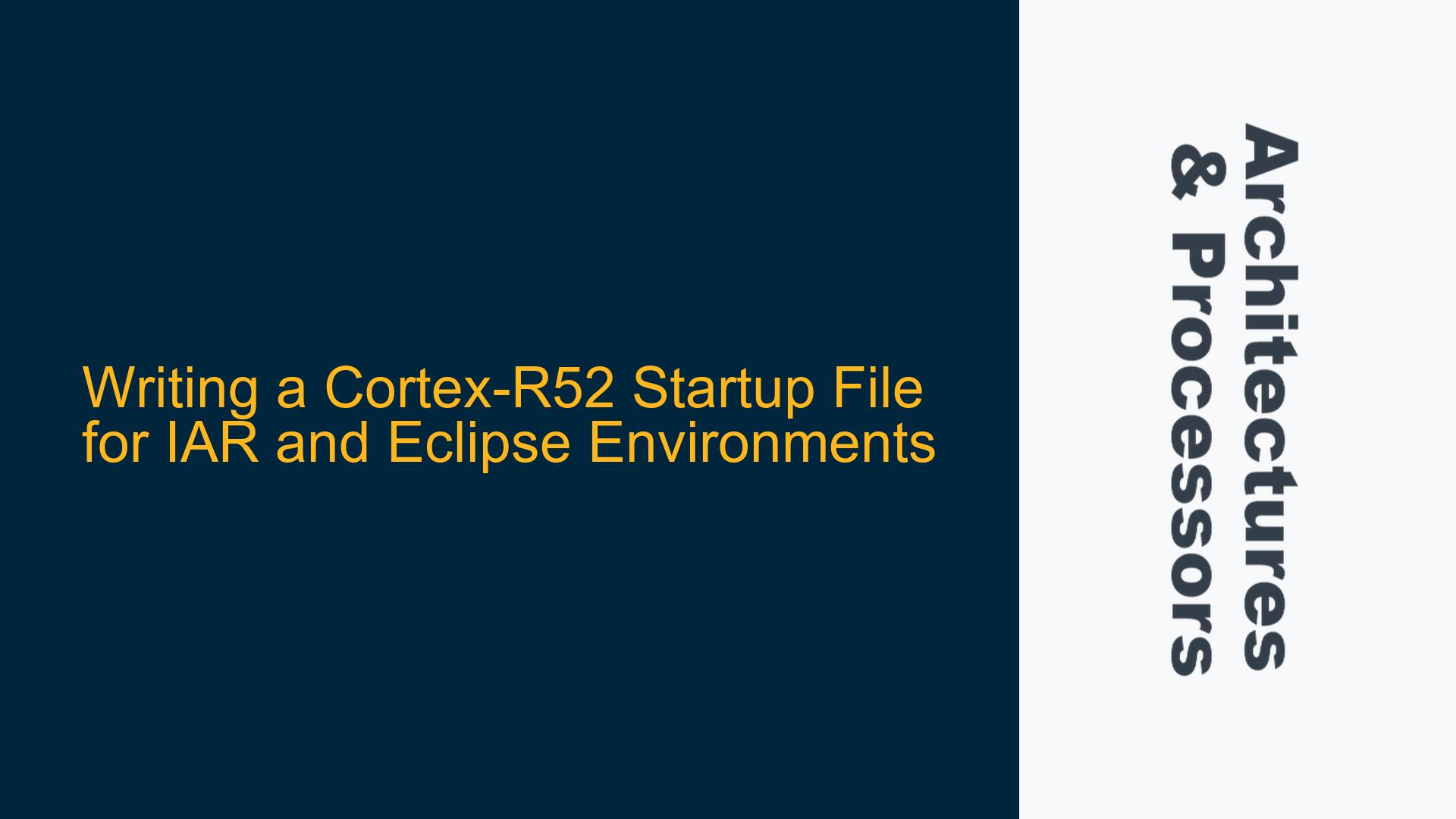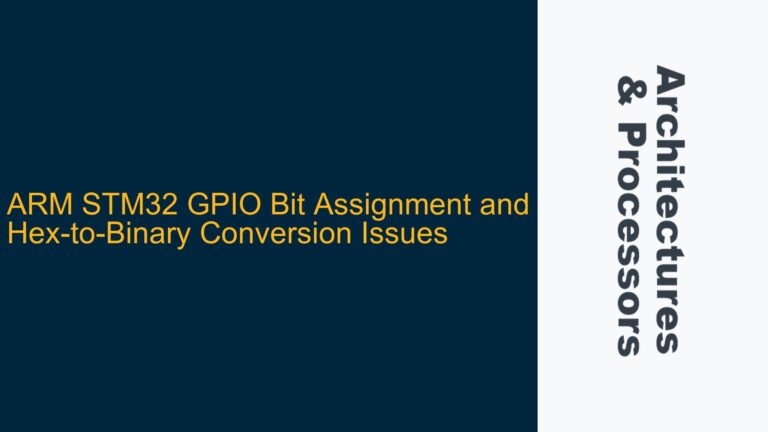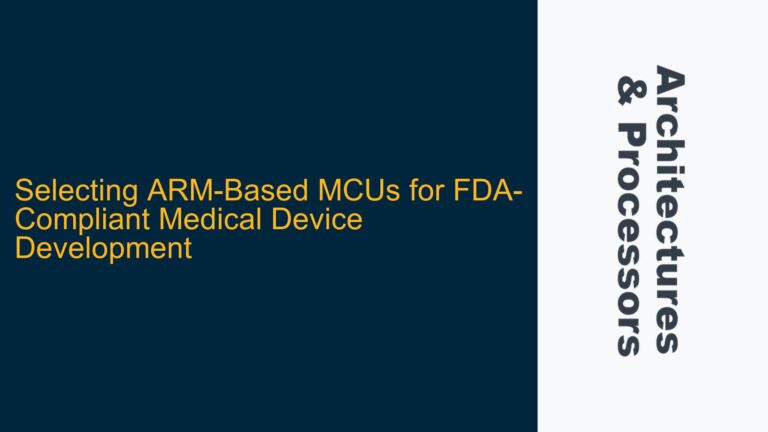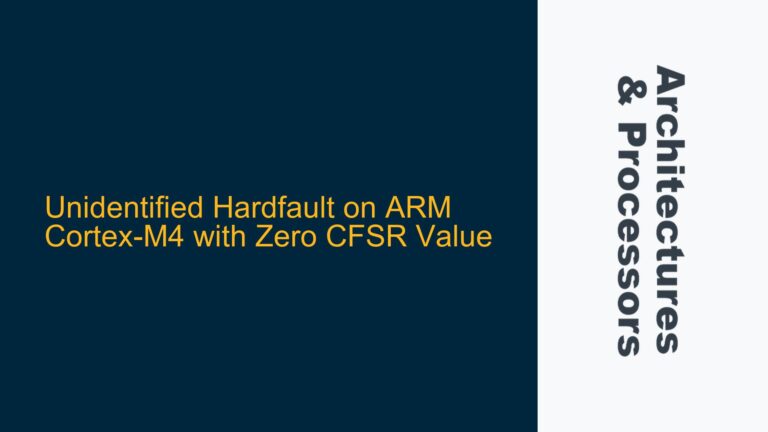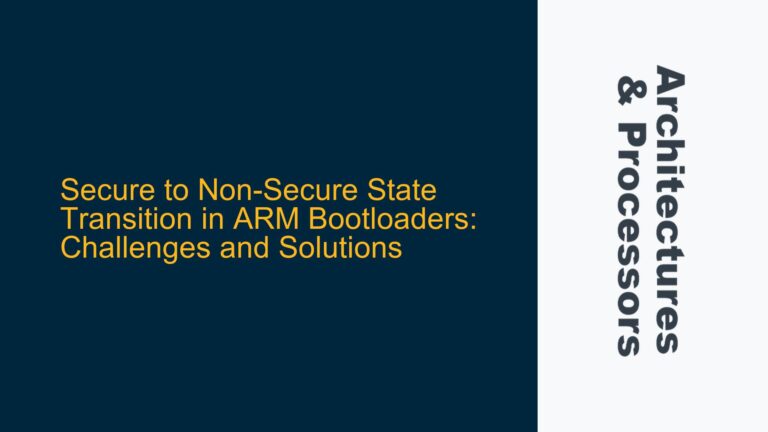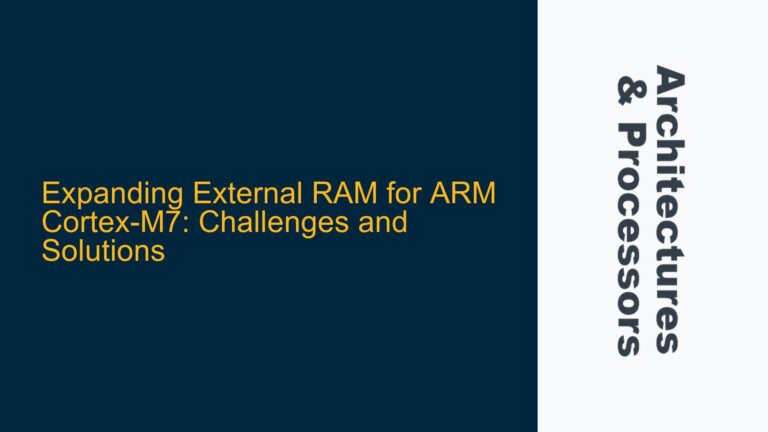Cortex-R52 Startup File Requirements and Challenges
The Cortex-R52 is a high-performance, real-time processor designed for safety-critical applications, often used in automotive, industrial, and aerospace systems. Writing a startup file for the Cortex-R52 involves initializing the processor, setting up the memory map, configuring the stack pointers, and preparing the environment for the main application. Unlike the Cortex-M series, the Cortex-R52 has a more complex memory system, including optional Memory Protection Units (MPUs), caches, and multicore capabilities, which add layers of complexity to the startup process.
The startup file, typically written in assembly language (e.g., startup.s), is responsible for the following tasks:
- Vector Table Initialization: The Cortex-R52 requires a vector table that defines exception handlers, including reset, interrupts, and system exceptions. The vector table must be placed at a specific memory location, often at the beginning of the flash memory.
- Stack Pointer Initialization: The Cortex-R52 has multiple stack pointers (e.g., for different processor modes like Supervisor, IRQ, and FIQ). Each stack pointer must be initialized to a valid memory region.
- Memory System Configuration: This includes setting up the MPU (if present), enabling caches, and configuring memory regions for code, data, and peripherals.
- C Runtime Environment Setup: The startup file must initialize the
.bssand.datasections, copy initialized data from flash to RAM, and call themain()function.
The challenge lies in the lack of readily available examples for the Cortex-R52, especially for IAR and Eclipse environments. While MDK (Keil) provides examples for Cortex-M, the Cortex-R52’s architecture and requirements differ significantly, necessitating a custom approach.
Missing Examples and Toolchain-Specific Considerations
One of the primary issues is the absence of comprehensive examples for writing a Cortex-R52 startup file in IAR and Eclipse environments. The Cortex-R52 is often used in specialized applications, and its startup requirements are not as well-documented as those for the Cortex-M series. Additionally, the toolchain used (IAR, GCC, Arm Compiler) affects the syntax and structure of the startup file.
For IAR, the startup file must adhere to the IAR Embedded Workbench’s assembly syntax and linker script requirements. IAR uses its own directives for section placement and initialization, which differ from GCC or Arm Compiler. Similarly, Eclipse-based projects using GCC require a startup file that aligns with the GNU assembler syntax and linker script conventions.
The lack of examples is compounded by the Cortex-R52’s advanced features, such as:
- Dual-Core or Multicore Configurations: If the Cortex-R52 is used in a multicore setup, the startup file must handle core-specific initializations and synchronizations.
- MPU Configuration: The MPU must be configured to define memory regions and access permissions, which requires a deep understanding of the Cortex-R52’s memory model.
- Cache Initialization: Enabling and invalidating caches is critical for performance but adds complexity to the startup sequence.
Developing a Cortex-R52 Startup File for IAR and Eclipse
To address the challenges of writing a Cortex-R52 startup file, the following steps outline a structured approach for both IAR and Eclipse environments.
Step 1: Define the Vector Table
The vector table is the first component of the startup file. It must be placed at the beginning of the flash memory and contain the initial stack pointer value and exception handlers. For the Cortex-R52, the vector table includes entries for reset, undefined instructions, software interrupts, prefetch aborts, data aborts, IRQs, FIQs, and additional system exceptions.
In IAR, the vector table can be defined using the SECTION directive to place it at the correct memory location. For example:
SECTION .intvec:CODE:ROOT(2)
PUBLIC __vector_table
__vector_table:
DCD __initial_sp ; Initial Stack Pointer
DCD Reset_Handler ; Reset Handler
DCD NMI_Handler ; NMI Handler
DCD HardFault_Handler ; Hard Fault Handler
; Additional exception handlers...
In GCC (Eclipse), the vector table is defined similarly but uses GNU assembler syntax:
.section .isr_vector, "a"
.global __isr_vector
__isr_vector:
.word __initial_sp ; Initial Stack Pointer
.word Reset_Handler ; Reset Handler
.word NMI_Handler ; NMI Handler
.word HardFault_Handler ; Hard Fault Handler
; Additional exception handlers...
Step 2: Initialize Stack Pointers
The Cortex-R52 has multiple stack pointers for different processor modes. The startup file must initialize each stack pointer to a valid memory region. For example, the Supervisor mode stack pointer (SVC_SP) and IRQ stack pointer (IRQ_SP) must be set up before entering the main application.
In IAR:
LDR R0, =__initial_sp ; Load initial stack pointer value
MSR CPSR_c, #0x13 ; Switch to Supervisor mode
MOV SP, R0 ; Set Supervisor stack pointer
MSR CPSR_c, #0x12 ; Switch to IRQ mode
SUB R0, R0, #0x100 ; Adjust for IRQ stack
MOV SP, R0 ; Set IRQ stack pointer
In GCC:
ldr r0, =__initial_sp ; Load initial stack pointer value
cps #0x13 ; Switch to Supervisor mode
mov sp, r0 ; Set Supervisor stack pointer
cps #0x12 ; Switch to IRQ mode
sub r0, r0, #0x100 ; Adjust for IRQ stack
mov sp, r0 ; Set IRQ stack pointer
Step 3: Configure the Memory System
The Cortex-R52’s memory system must be configured to enable caches, set up the MPU (if present), and define memory regions. This step is critical for ensuring optimal performance and memory protection.
For cache initialization, the startup file must enable the L1 cache and invalidate it to ensure no stale data is present:
; Enable L1 Data Cache
MRC p15, 0, r0, c1, c0, 0 ; Read CP15 System Control Register
ORR r0, r0, #(1 << 2) ; Set C bit (Data Cache)
MCR p15, 0, r0, c1, c0, 0 ; Write back to CP15
; Invalidate L1 Data Cache
MOV r0, #0
MCR p15, 0, r0, c7, c6, 0 ; Invalidate entire data cache
For MPU configuration, the startup file must define memory regions and access permissions. This involves writing to the CP15 registers to set up the MPU regions:
; Configure MPU Region 0
LDR r0, =0x00000000 ; Base address
LDR r1, =0x1F00000A ; Size and attributes
MCR p15, 0, r0, c6, c0, 0 ; Write to MPU Region Base Register
MCR p15, 0, r1, c6, c1, 0 ; Write to MPU Region Size and Enable Register
Step 4: Set Up the C Runtime Environment
The startup file must initialize the .bss and .data sections to prepare the C runtime environment. This involves clearing the .bss section and copying initialized data from flash to RAM.
In IAR:
; Clear .bss section
LDR r0, =__bss_start__
LDR r1, =__bss_end__
MOV r2, #0
ClearBss:
CMP r0, r1
STRLO r2, [r0], #4
BLO ClearBss
; Copy .data section from flash to RAM
LDR r0, =__data_load__
LDR r1, =__data_start__
LDR r2, =__data_end__
CopyData:
CMP r1, r2
LDRLO r3, [r0], #4
STRLO r3, [r1], #4
BLO CopyData
In GCC:
; Clear .bss section
ldr r0, =__bss_start__
ldr r1, =__bss_end__
mov r2, #0
ClearBss:
cmp r0, r1
strlo r2, [r0], #4
blo ClearBss
; Copy .data section from flash to RAM
ldr r0, =__data_load__
ldr r1, =__data_start__
ldr r2, =__data_end__
CopyData:
cmp r1, r2
ldrlo r3, [r0], #4
strlo r3, [r1], #4
blo CopyData
Step 5: Call the Main Application
Finally, the startup file must call the main() function to start the application. This is typically done using a branch instruction:
; Call main()
LDR r0, =main
BX r0
Toolchain-Specific Considerations
For IAR, the linker script must be configured to define memory regions and section placements. The linker script should include definitions for __initial_sp, __bss_start__, __bss_end__, __data_start__, __data_end__, and __data_load__.
For GCC (Eclipse), the linker script (.ld file) must define the same symbols and ensure proper alignment of sections. The linker script should also specify the entry point as Reset_Handler.
Conclusion
Writing a Cortex-R52 startup file for IAR and Eclipse environments requires a deep understanding of the processor’s architecture and the toolchain’s requirements. By following the steps outlined above, developers can create a robust startup file that initializes the Cortex-R52 and prepares it for running the main application. While the process is complex, careful attention to detail and adherence to best practices will ensure a reliable and efficient system startup.
